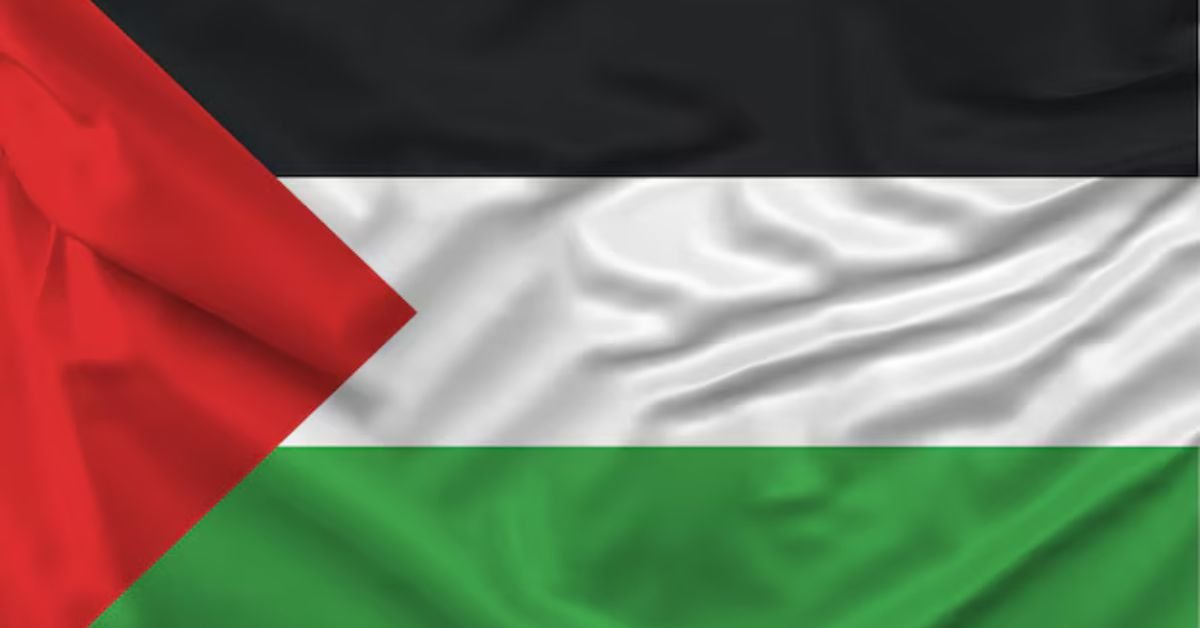The Palestinian flag is a powerful symbol of identity, resistance, and national aspiration. With its distinctive colors and design, it represents the Palestinian people’s quest for self-determination and statehood. This article provides an in-depth look at the Palestinian flag, exploring its historical origins, symbolic elements, and cultural significance.
Design and Colors
The Palestinian flag consists of four horizontal stripes and a red triangle. The flag’s colors—black, white, green, and red—are arranged in horizontal bands of black at the top, white in the middle, and green at the bottom, with a red triangle extending from the hoist side.
- Black Stripe: The black stripe represents the dark period of oppression and struggle in Palestinian history. It is also associated with the historical Arab state of the Abbasid Caliphate.
- White Stripe: The white stripe symbolizes peace and the desire for a peaceful resolution to the conflict. It reflects the hope for reconciliation and coexistence.
- Green Stripe: The green stripe stands for the fertile lands of Palestine and the aspiration for growth and prosperity. It is also linked to the early Arab states and signifies hope and renewal.
- Red Triangle: The red triangle represents the struggle for liberation and the bloodshed in the fight for independence. It also highlights the revolutionary spirit and courage of the Palestinian people.
Historical Background
The Palestinian flag’s design is rooted in a broader context of Arab nationalist movements. The current design of the flag was officially adopted by the Palestine Liberation Organization (PLO) in 1964. However, its elements are derived from the flag of the Arab Revolt of 1916, which was a symbol of the broader Arab struggle for independence from Ottoman rule.
The Arab Revolt flag, used during World War I, featured the same color scheme and was designed to represent Arab unity and independence. After the establishment of the PLO, the flag was adapted to symbolize the Palestinian national movement and its aspirations for statehood.
Symbolic Significance
The Palestinian flag holds profound symbolic meaning for the Palestinian people. Each element of the flag reflects different aspects of their historical and cultural narrative:
- Historical Struggle: The black, white, and green colors reflect the historical context of the Arab nationalist movement, linking the Palestinian struggle to a broader regional context of resistance against colonialism and oppression.
- National Identity: The flag serves as a unifying symbol for Palestinians, both within the occupied territories and in the diaspora. It represents national pride, unity, and the shared dream of an independent state.
- Resistance and Aspiration: The red triangle emphasizes the ongoing struggle for self-determination and independence. It embodies the sacrifices made by Palestinians in their quest for sovereignty and freedom.
Adoption and Usage
The Palestinian flag was officially adopted by the PLO as the flag of the Palestinian people in 1964. It was later recognized as the flag of the State of Palestine following its declaration of independence in 1988. The flag is used in various contexts, including official state functions, international representations, and public demonstrations.
In addition to its use in official settings, the flag is a common sight at rallies, protests, and cultural events. It serves as a potent symbol of Palestinian identity and solidarity, and it is often displayed prominently in various forms of media and public spaces.
International Recognition
The Palestinian flag is recognized by many countries and international organizations. The State of Palestine has been recognized by over 130 United Nations member states and is a non-member observer state at the United Nations. The flag’s presence at international forums and diplomatic events underscores the global acknowledgment of Palestinian aspirations and the ongoing quest for statehood.
The flag is also used by various non-governmental organizations and solidarity groups that support the Palestinian cause. Its international recognition reflects the global awareness of the Palestinian struggle and the widespread support for Palestinian rights.
Cultural and Political Context
The Palestinian flag is more than just a national symbol; it is deeply embedded in the cultural and political landscape of the region. It plays a significant role in expressing Palestinian identity and political consciousness.
- Cultural Significance: The flag is a central element of Palestinian cultural expression. It is featured in artwork, literature, and music, serving as a source of inspiration and pride for Palestinians worldwide.
- Political Symbolism: The flag is a potent symbol in political discourse and activism. It is used to convey messages of resistance, solidarity, and the ongoing struggle for justice and self-determination.
Controversies and Challenges
The Palestinian flag has been a focal point of controversy and conflict, particularly in the context of the Israeli-Palestinian conflict. The flag’s display and usage can sometimes lead to tensions and disputes, reflecting the broader political and territorial disputes in the region.
- Conflicts and Restrictions: In some instances, the flag has been subject to restrictions and censorship, particularly in areas where political tensions are high. These restrictions can impact the ability of Palestinians to freely express their identity and political views.
- Symbol of Division: The flag can also be a symbol of division and contention between different political factions within Palestinian society. While it unifies many, it can also reflect internal political disagreements and challenges.
Educational and Informational Value
The Palestinian flag serves as an important educational tool for understanding the history, culture, and politics of the Palestinian people. It provides valuable insights into the ongoing conflict and the broader context of Middle Eastern geopolitics.
Educational resources and programs often use the flag as a means of discussing issues related to national identity, self-determination, and international diplomacy. It helps to foster a deeper understanding of the Palestinian narrative and the complexities of the region.
Conclusion
The Palestinian flag is a powerful symbol that encapsulates the rich history, cultural identity, and political aspirations of the Palestinian people. Its design, colors, and usage reflect a deep connection to historical struggles, national pride, and the ongoing quest for self-determination. As a symbol of resistance and hope, the Palestinian flag continues to play a crucial role in the political and cultural landscape of the region, representing the enduring spirit and aspirations of the Palestinian people.











